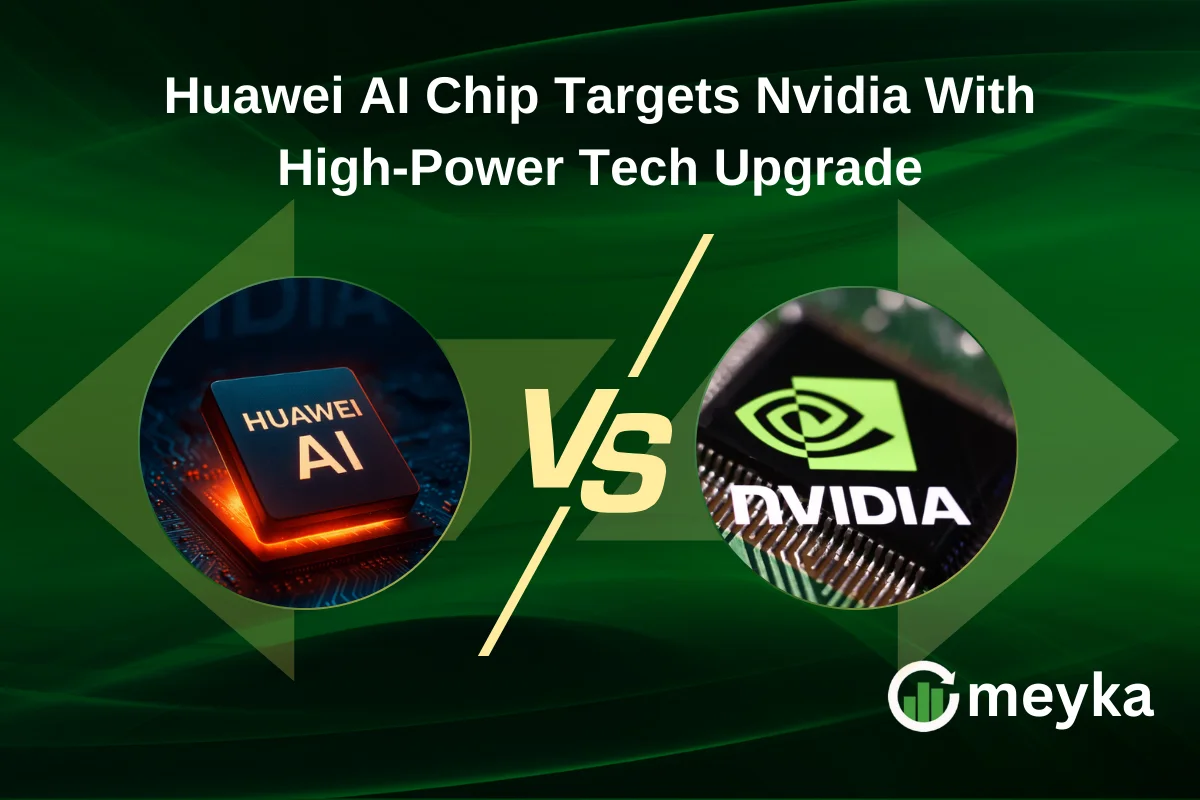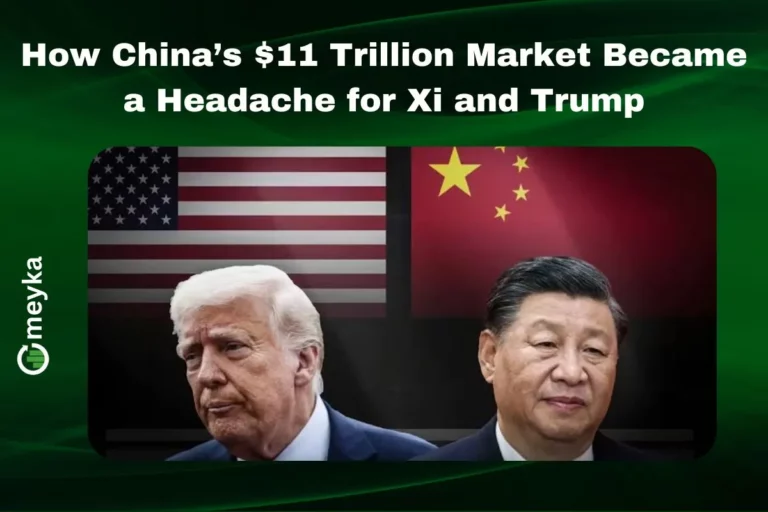Huawei AI Chip Targets Nvidia With High-Power Tech Upgrade
The global race for artificial intelligence hardware is intensifying, and Huawei has emerged as one of the strongest contenders. With its Huawei AI Chip, the company is positioning itself to directly challenge Nvidia, a long-standing leader in the AI hardware market. This breakthrough technology is not just about competing in speed and power; it is about reshaping the balance of global innovation, investment in AI stocks, and the future of the stock market tied to AI-driven companies.
Huawei AI Chip: A Bold Step Toward Leadership
Huawei has invested heavily in research and development despite global restrictions and trade limitations. The Huawei AI Chip represents a significant leap in performance, targeting high-power AI applications such as natural language processing, advanced robotics, autonomous vehicles, and big data analytics.
Unlike earlier generations of Huawei processors, this chip integrates cutting-edge architecture with improved computational efficiency. This means faster processing speeds, lower energy consumption, and the ability to handle more complex AI models with ease. Such features are critical as industries demand chips that can support rapid advancements in machine learning.
Why Huawei Is Targeting Nvidia
Nvidia has dominated the AI hardware sector with its powerful GPUs. These chips fuel everything from ChatGPT-style AI models to advanced driver-assistance systems. However, Huawei is now presenting itself as a credible rival.
The new Huawei AI Chip aims to address areas where Nvidia has established dominance. Specifically, Huawei is focusing on:
- High-performance training for AI models
- Cloud computing scalability
- Cost-effective solutions for enterprise customers
This move is not just about outperforming Nvidia technically. It is about offering a competitive alternative that challenges Nvidia’s market share in AI-driven industries.
Impact on AI Stocks and Market Dynamics
The launch of the Huawei AI Chip is expected to create ripples across the AI stock market. Investors closely monitor advancements in AI hardware because such innovations directly influence demand for AI-driven services.
For companies tied to Nvidia, the emergence of Huawei as a rival could reshape stock valuations. Similarly, Huawei’s presence in the AI chip market could boost interest in Asian technology firms listed in global exchanges. As the competition heats up, stock research analysts are likely to reassess their forecasts for both Huawei’s partners and Nvidia’s growth prospects.
In broader terms, Huawei’s advancements will force a reevaluation of global tech leadership. Nations and corporations that depend heavily on AI infrastructure may diversify their reliance on Nvidia, creating a more competitive landscape in the stock market.
The Technology Behind Huawei’s AI Chip
Huawei’s engineers have focused on three pillars in designing their new AI chip:
- Processing Power – Optimized for high-volume data processing, enabling smoother execution of large-scale AI models.
- Energy Efficiency – Designed to consume less energy while performing at higher speeds, reducing operational costs.
- Scalability – Built for cloud integration, ensuring adaptability for industries ranging from healthcare to finance.
The company has also hinted at advanced fabrication techniques that align it with the latest semiconductor innovations. Although Huawei still faces challenges due to restricted access to some global manufacturing tools, the company has managed to push forward using domestic resources and partnerships in Asia.
Global Implications of Huawei’s Move
Huawei’s chip release has broad geopolitical implications. The U.S. has placed restrictions on Huawei’s access to advanced chip-making technology, but this has only accelerated the company’s drive toward self-reliance.
By developing its own high-power Huawei AI Chip, Huawei reduces dependency on foreign suppliers. This step not only strengthens its position in the AI race but also signals China’s broader ambition to achieve technological independence.
For global businesses, this development means more options when sourcing AI hardware. It could also lead to price competition, as Nvidia may have to adjust its pricing to defend its market share.
Comparison: Huawei vs. Nvidia
When comparing Huawei’s AI chip with Nvidia’s offerings, several points stand out:
- Performance: Huawei claims competitive speeds in AI training and inference tasks.
- Ecosystem: Nvidia maintains a stronger software ecosystem with CUDA, while Huawei is working to expand its support systems.
- Availability: Nvidia has a global distribution network, but Huawei’s reach is more limited due to trade barriers.
- Cost: Huawei may price its chips aggressively to attract enterprise customers and gain a foothold.
Although Nvidia still has a dominant market presence, Huawei’s challenge is real and could alter the industry’s long-term dynamics.
Investment Perspective
From an investment standpoint, Huawei’s entry with a powerful AI chip adds both opportunities and uncertainties. For those following AI stocks, the move suggests potential growth in companies linked to Huawei’s supply chain.
At the same time, investors must account for the political risks tied to Huawei’s operations, given international trade restrictions. Stock research will be crucial for evaluating how these competing forces shape future stock prices.
For Nvidia, competition from Huawei may lead to increased innovation but could also put pressure on margins if pricing wars begin. Long-term investors in AI-focused funds should carefully monitor these developments.
The Future of AI Chips
The AI hardware industry is only at the beginning of its growth curve. Demand for advanced chips will continue to rise as more industries adopt AI.
Huawei’s AI chip upgrade demonstrates that competition will intensify, driving innovation, performance improvements, and potentially lower costs for end users. The coming years will determine whether Huawei can overcome global challenges to establish itself as a permanent fixture alongside Nvidia.
For businesses, governments, and investors, one thing is clear: the future of AI will be shaped by this competition.
FAQs
Huawei’s AI Chip is designed for high-performance, energy efficiency, and scalability. While Nvidia has a more mature ecosystem, Huawei’s chip provides a competitive alternative with strong potential in enterprise applications.
The launch could increase interest in Asian tech companies while putting competitive pressure on Nvidia-linked stocks. It introduces new opportunities for investors tracking the global AI hardware sector.
Yes, restrictions limit Huawei’s global distribution and access to certain technologies. However, the company’s focus on domestic innovation and partnerships helps it remain competitive in the AI race.
Disclaimer:
This content is made for learning only. It is not meant to give financial advice. Always check the facts yourself. Financial decisions need detailed research.






